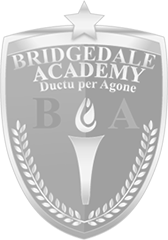Early Developers versus Late Bloomers
by Mike McPartlin, Headmaster, Bridgedale Academy
(This is the third of a 4-part blog series about developing physical literacy in young athletes.)
In Developing Physical Literacy - Part 1, we discussed the concept of physical literacy generally. In a nutshell, the physical literacy that a young athlete develops prior to the onset of puberty forms the foundation for his or her post-puberty athleticism.
In Developing Physical Literacy - Part 2, we looked at the Long Term Athlete Development model, and how it focuses on physiological age versus chronological age in outlining its seven stages of athletic development.
This article looks at how physical literacy might factor in to the phenomenon of early developers versus late bloomers.
The early birthday phenomenon
 It is well-documented that youth sports tend to be dominated by early-maturing youngsters. This is obviously true during adolescence when the “early developer,” having already reached puberty, is bigger, stronger, faster and more aggressive than the late developer.
It is well-documented that youth sports tend to be dominated by early-maturing youngsters. This is obviously true during adolescence when the “early developer,” having already reached puberty, is bigger, stronger, faster and more aggressive than the late developer.
But the phenomenon also occurs well before adolescence, when so many of the top-performing youth athletes are simply “older” (i.e. born earlier in the year) than their same birth-year teammates and opponents.
The Relative Age Effect
There are numerous studies which attempt to explain why athletes born in the earlier months of the year tend to dominate high-level sports.
There is general agreement among the researchers that this is due to the fact that youth athletes get grouped on teams (in “cohorts”) according to cut-off dates.
In other words, in virtually all youth sports, there is a cut-off date for age level competition.
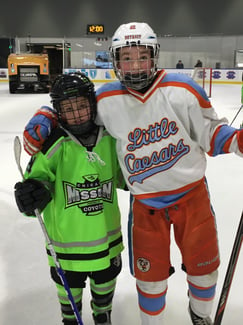 In most instances, the cut-off date is based on the calendar year. And so children born in January will have an advantage over those born in December because of nearly a full year more of growth and development.
In most instances, the cut-off date is based on the calendar year. And so children born in January will have an advantage over those born in December because of nearly a full year more of growth and development.
Yet a September 1st cut-off date for English youth soccer players resulted in a similar advantage for youngsters born in September and the succeeding months over those who were born in June, July or August.
This phenomenon is called the Relative Age Effect (RAE).
The effects of RAE on youth athletes
At the highest competitive levels of youth sports, there is pressure on organizations and coaches to pick the strongest and most coordinated players available, i.e. to field the team with the best chance to win.
Very often, therefore, coaches and organizations end up favoring “older” players over more “talented” players who are simply younger (and who are therefore physically less developed).
There is no intent to discriminate against the younger players. It’s just what happens.
The effects are usually cumulative
The advantages that go to these “older” players, especially at the highest levels of competition, continue to accumulate from year to year.
Let’s take as an example, a 9-year old hockey player born in January who gets selected to an elite team and is thus regarded as an excellent player, i.e. one with talent.
The proud parents of this player will naturally tend to invest more time and resources in nurturing this talent. This usually translates into more skills development, more practices and more games.
And there is ultimately more feedback as well. And at the highest levels much of this feedback is likely to be coming from elite coaches.
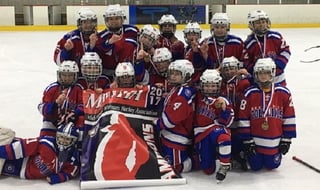 Such a player benefits not only because he receives more of this positive feedback, but also because he is surrounded by similarly “gifted” players and is experiencing higher-paced practices and games.
Such a player benefits not only because he receives more of this positive feedback, but also because he is surrounded by similarly “gifted” players and is experiencing higher-paced practices and games.
And as the player experiences more and more success and positive feedback, he gains more confidence. And this in turn becomes a psychological advantage, magnifying the player’s original “age” advantage.
And so from year to year, the gap created by the advantage grows wider.
How does this impact the late bloomer?
One implication of the RAE’s cumulative effect is that the smaller, younger player who was not selected to the elite team at 9 years old (and who therefore doesn’t get the additional advantages of being on the elite team, etc.) is often at risk over time of falling farther and farther behind the development curve.
To prevent this, the late bloomer must learn to be that much more resilient, that much more able to bounce back from disappointments.
But being resilient and able to bounce back from disappointments is not easy for a 9-year old. And sometimes it can be even more challenging for a 13- or 14-year old adolescent.
And as a result, many such youngsters become discouraged, even to the point of giving up their sport.
Are there positives for the late bloomer athlete?
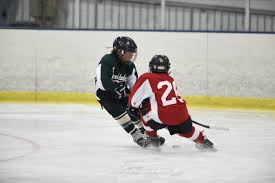 As pointed out in prior blogs, a youngster who is late to puberty does have the advantage of a longer “window of opportunity” to develop his physical literacy. But as also pointed out, the youngster who becomes discouraged often fails to take advantage of this.
As pointed out in prior blogs, a youngster who is late to puberty does have the advantage of a longer “window of opportunity” to develop his physical literacy. But as also pointed out, the youngster who becomes discouraged often fails to take advantage of this.
Interestingly, there are also research studies finding that the relatively younger late bloomers often end up being the highest performers, i.e. in athletics but also in academics.
In these studies it was found that although the “mean” or “average” performance of those who were relatively younger was lower than their older competitors, yet the truly exceptional performers often came from the younger members of the group.
This suggests that greater rewards may await late bloomers who are able to overcome the disadvantages of being relatively younger.
The impacts of RAE go beyond sports
Most studies on the effects of RAE are wide-ranging, looking at its impacts not just on youth athletics but also on academic performance and socialization skills.
And not surprisingly, here too there tend to be significant advantages that go to those youngsters who are the oldest in their grade or class.
The research shows that the older students perform better academically, especially in schools with “ability streaming” (in which students are grouped at a young age in hierarchies of academic proficiency).
And, as in youth sports, the academic advantages also tend to be cumulative.
Some very troubling impacts of RAE
Startlingly, RAE also appears to have a powerful influence on a youngster’s socialization and behavior. For example, one recent large-scale study found that the relatively younger students were more likely to be prescribed medicine to treat ADHD.
Other studies confirm that the relatively younger students were also more likely to be placed in remedial programs and be diagnosed as having “special needs” academically.
A report from The British Psychological Society discusses some of these more wide-ranging factors.
Conclusion
The phenomenon of Relative Age Effect reveals there are built-in advantages to young athletes who are older than others in their cohort, grade or age-level. This is true generally for those who are older chronologically, but it is also true for those who are physiologically older than their peers.
Overcoming the disadvantages of being relatively younger can be very difficult, especially when a talented young athlete has been excluded from elite level competition at the earliest ages.
For late bloomers, capitalizing on the advantages that do favor them can be challenging and tends to require that they develop an unusual level of resolve, resiliency and stick-to-itiveness.
But for those late bloomers who are able to develop this greater resolve and resiliency, the rewards later in life can be significant.
(Part 4 of this blog series discusses physical literacy and the state of youth athletics today.)
To learn more about Bridgedale, please click the button below to schedule a time to chat with Bridgedale's Headmaster.
At Bridgedale we are committed to the development of our young student-athletes, helping them to develop their physical and mental skills so they can perform at their best when it matters most, no matter the arena of life that challenges them. If you would like to learn more about Bridgedale Academy, please click the button below so we can schedule a time to chat.
Mike McPartlin, Headmaster, Bridgedale Academy
Attention 4th Graders
In addition to our 5th through 8th graders, Bridgedale Academy is accepting a limited number of 4th graders for the 2023-24 school year, on a case-by-case basis. Please call me at 708-712-5079 to inquire.
Mike McPartlin, Headmaster
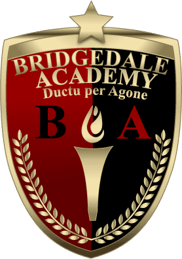
Bridgedale students LOVE going to school,
and so they THRIVE in it.
They LOVE coming to school every day.
And as a result, they are thriving.
They engage academically ...
... and so they come to love learning.
They also love that they get to work on the sport they have such passion for, while also training to become better athletes, all as part of their school day.
They train athletically ...
... and so they more fully develop their skills.
They LOVE getting so much better ... so much sooner.
They are physically fit and mentally alert ... they are thriving.
“Every shot you don't take won't go in.”
Wayne Gretzky
Bridgedale is now enrolling students for the 2023-24 School Year.





